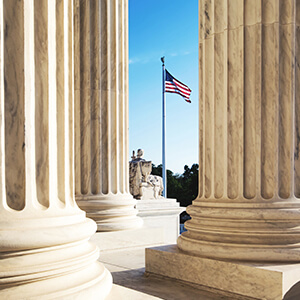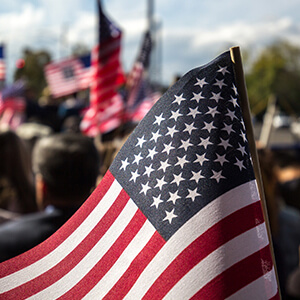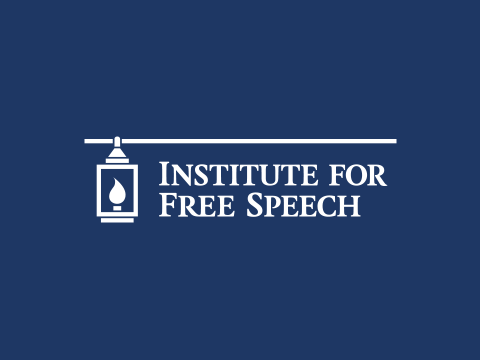Blockbuster court decisions reshaped campaign finance law this year, and the Watergate-era regulatory structure has struggled to keep up with the modern realities of political activity. As a result, the rights of independent groups have been restored while parties and candidates face a competitive disadvantage.
The Center for Competitive Politics (CCP) released an agenda today, “After 2010: A Modern Agenda for Campaign Finance Reform,” which outlines steps policymakers can take to increase incentives for citizen participation in politics, encourage electoral competition and simplify the maze of campaign finance regulations.
“After the failure of the DISCLOSE Act, which inflamed partisan tensions, this reform agenda offers a way forward for the next Congress to overhaul campaign finance law while respecting First Amendment rights,” said Bradley A. Smith, the chairman of the Center for Competitive Politics and a former FEC chairman.
This session, Congress properly rejected the DISCLOSE Act, which would have restricted the political speech of business groups while inventing new, onerous disclosure and disclaimer regulations. The Federal Election Commission is in the process of implementing a rulemaking to change campaign finance regulations following the Supreme Court’s January decision in Citizens United v. Federal Election Commission.
“Congress should consider reforms to ensure that parties remain relevant,” said Allison Hayward, CCP’s vice president of policy. “Enhancing the ability of candidates to effectively communicate their message to voters in a post-2010 world will improve our election process and help to sustain the competitive balance vital to our democratic republic.”
“We hope these proposals, gleaned from a range of bipartisan suggestions, serve as a starting point for a renewed debate over campaign finance laws in Congress and at the Federal Election Commission,” Hayward said.
At least six changes in campaign finance law would offer parties and candidates a better hope of competing in the new campaign environment:
1. Remove Limits on Coordinated Party Spending and Clarify the Coordination Standard
The Watergate-era coordination restrictions should be updated in light the Supreme Court’s decision in Citizens United. The odd result of past court precedent and legislation is to drive a wedge between parties and candidates. Parties can spend unlimited sums to help their candidates, but only if they do so independently of the candidates-that is, without sharing information on the candidate’s strengths and weaknesses, strategies, plans, polling data, and needs. Prior to McCain-Feingold, this dichotomy might have made some sense, in that parties could accept and spend “soft” money—funds raised outside the federal limits and source restrictions—to support candidates so long as they avoided “express advocacy.” Therefore, “soft money” could be spent independently and hard money could be spent in coordination (up to a limit) with the candidate. Since McCain-Feingold, however, national political parties have been prohibited from accepting any contribution that does not meet the limits and prohibitions of federal law. Thus, all party spending is “hard”-regulated and limited-money. There is no legitimate purpose in limiting the ability of political parties to spend unlimited “hard” money in coordination with a campaign. Eliminating the coordination barrier would allow parties and candidates to do what parties and candidates ought to do: work together to gain election, and to spend money on the races they deem most important. Prominent political attorneys, such as Democratic lawyer Marc Elias, advocated for such a change recently in testimony before the FEC.
2. Restore Tax Credits for Small Contributions
Prior to the federal tax reform of 1986, taxpayers received a tax credit for political contributions up to $50, or $100 on a joint return. Adjusted for inflation from 1978 (the last time Congress changed the amounts), that credit today would be $165, or $330 for a joint return. Tax credit and deduction proposals date back to 1960, when President Kennedy’s Commission on Campaign Costs recommended a tax credit and deduction for political contributions. Restoring the tax credit at adjusted levels would encourage contributions, increase the pool of small donations available to candidates, and make fundraising easier and less time consuming. In addition, a tax credit might encourage more people to become involved in the political process, feel they had a personal connection with campaigns and candidates, and could do far more than contribution limits to restore faith in the political process.
3. Adjust Contribution Limits (Including the Aggregate Limit) to Adequately Account for Inflation
The McCain-Feingold bill doubled individual limits on contributions to specific candidates and indexed them for inflation. This increase, however welcome, made up for barely half of the loss in real value of the limits since they were imposed in 1974. Higher contribution limits also address what many regard as the problem of self-funding candidates. The ability of candidates without personal reserves of wealth to remain competitive improves significantly when limits are higher. There is no indication that limits set as inflation adjusted levels would create incentives for corruption. When Congress set the 1974 limits, it was acting at a time of high sensitivity about money in politics, and it nevertheless felt these limits were appropriate
4. Permit Independent Solicitation and Facilitation of Contributions to PACs
Connected PACs are permitted to solicit contributions only from a restricted class of potential donors, such as corporate executives, shareholders, or members. Furthermore, third-party solicitation of PAC money is not allowed. These rules should be modernized, and the law should allow groups more leeway to finance small-donor political committees. One way to accomplish this would be by abolishing these “restricted class” requirements.
5. Adjust Disclosure Thresholds for Inflation
Disclosure can provide voters with helpful voting cues. The donations of interest groups and knowledgeable contributors may send signals to voters at large as to which candidates are worthy of support. And disclosure does not directly limit one’s ability to speak. For these reas
ons, disclosure of contributions and expenditures is one part of the law that enjoys broad support. Disclosure is not, however, without costs. Foremost among them is invasion of privacy. Assuming that some disclosure of campaign contributions is worth these costs, we must still consider the level of disclosure. The Federal Election Campaign Act’s (FECA) thresholds for reporting individual donors and independent expenditures have not been adjusted since 1979. As a result, these thresholds, low when enacted, are ridiculously low now: $200 and $250, respectively. It is absurd to believe that donations and expenditures of $200 to $250 pose a danger of corruption and undue influence in the political process. If these numbers had merely kept up with inflation, the threshold on disclosure of individual contributions would now be approximately $600, and the limit on the disclosure of independent expenditures would now be approximately $750. Finally, raising the disclosure threshold may increase the number of Americans willing to contribute more than $200 to candidates, or even contribute at all, once they know their contribution will not become public knowledge and potentially subject them to retaliation.
6. Allow Limited Corporate and Union Contributions
Today’s corporate world is far different than in 1907 when the Tillman Act was enacted into law. The corporate form is used by almost any business, large or small, as well as a wide array of community groups and advocacy organizations. It is difficult to see how banning outright contributions by major organizations formed specifically to promote certain national issues, such as NARAL Pro-Choice America or the National Rifle Association, unleashes “great aggregations of wealth” into our politics. It is even more difficult to see how banning contributions from community groups, regional chambers of commerce, local unions, and local businesses does so. Lifting the outright ban on union or corporate contributions does not mean permitting unlimited contributions. These contributions could be limited as individual or PAC contributions are, and could include aggregate caps and provisions to ensure that corporate subsidiaries aren’t able to evade the cap. Several benefits would follow. First, it would broaden the base of support to include groups that aren’t structured to operate a PAC. Operating a PAC can be expensive. Many corporations and small trade associations spend as much money operating their PACs as those PACs actually spend on politics. But there are definite economies of scale, so that the expense of complying with PAC regulation tends to favor larger enterprises. Indeed, for many small corporations, the cost of maintaining a PAC and soliciting contributions is not worth the expense. The same, of course, applies to unions-repeal would also benefit small union locals.












